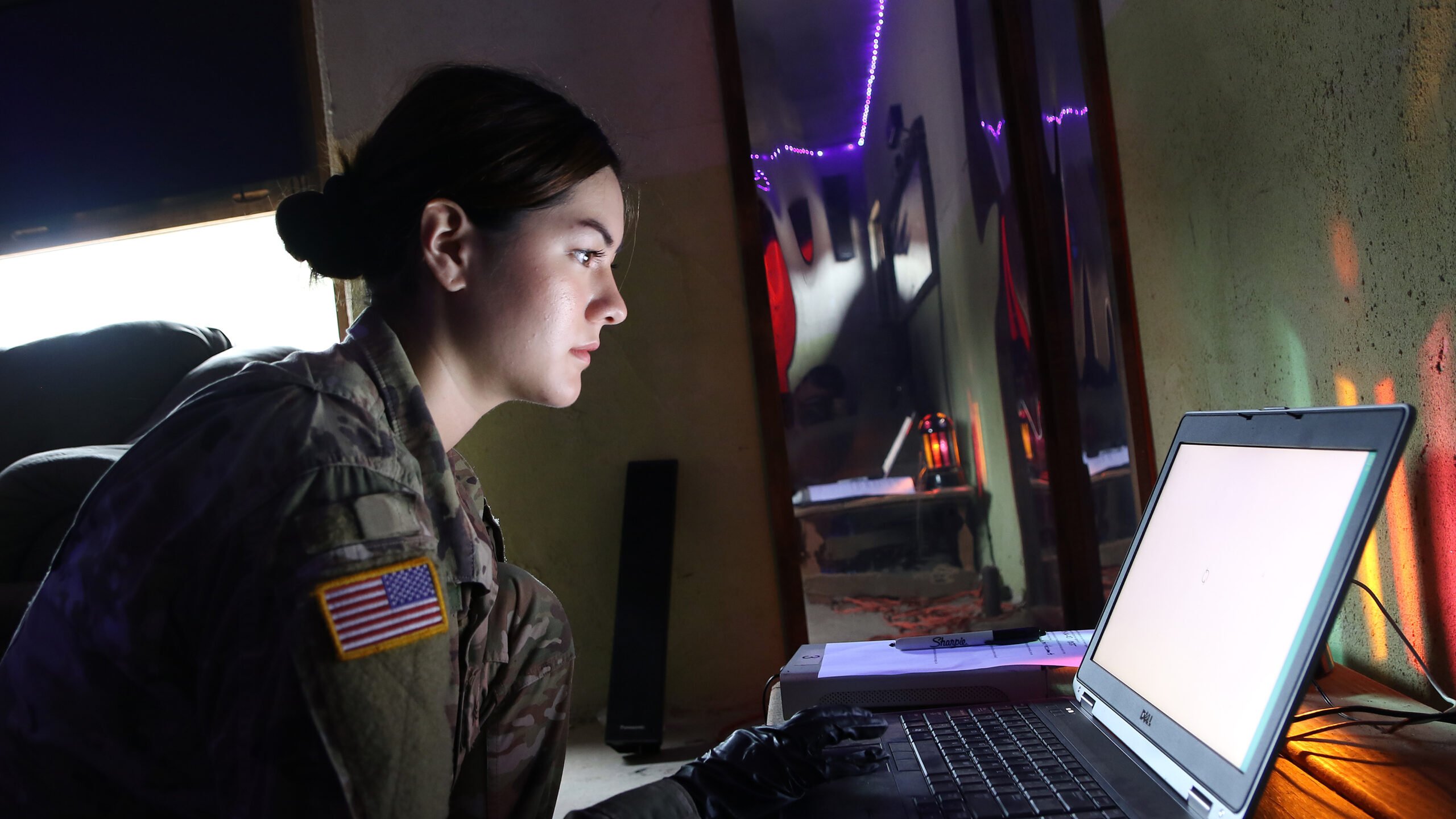
A student at the U.S. Army John F. Kennedy Special Warfare Center and School in the Technical Exploitation Course processes a laptop computer during training at Fort Bragg, North Carolina October 22, 2019. (U.S. Army photo by K. Kassens)
PHILADELPHIA — As soon as next fiscal year the Army will start awarding contracts for a relatively new project aimed at developing the service’s artificial intelligence and machine learning (AL/ML) operations pipeline — though an official said he’s wary of trying to do too much with it too early.
The service plans to award “one of multiple contract awards in March or April” for Project Linchpin in fiscal 2024, Col. Chris Anderson, project manager for intelligence systems in the Army’s program executive office for intelligence, electronic warfare and sensors (PEO IEW&S) said Wednesday at an industry technical exchange meeting.
Through Project Linchpin, an initiative started less than 10 months ago, the Army wants to develop an AI/ML operations “environment” for its intelligence, cyber and electronic warfare sensor systems, according to a request for information posted last year.
“The goal is to create a complete and efficient AI and ML development and delivery operational pipeline (AI/MLOPs) with supporting services for sensor programs within PEO IEW&S to provide needed capability while managing cost and risk.” The RFP suggested the environment would deal with sensor sources like Synthetic Aperture Radar (SAR), Radio Frequency (RF) spectrum, Electronic Intelligence, Full Motion Video and 3rd Generation Forward Looking Infrared (FLIR).
RELATED: NGA making ‘significant advances’ months into AI-focused Project Maven takeover
Anderson said there will be a draft “specification” released to industry for the effort in June or July of this year, followed by an industry day sometime in the fall. The Army will also release a request for white papers “no later than October,” he added.
But while initial contract awards will be made, another official put to words some worry he had about the Army asking Linchpin to do too much.
“The ambition of [Project] Linchpin makes me nervous,” said Mark Kitz, rhe PEO IEW&S. “We can’t answer all of our AI/ML ops questions with the initial iteration of Linchpin… We’ve got to scope Linchpin around specific areas, specific problems sets, specific datasets…This is not the AI/ML ops pipeline in FY24 for all of Army datasets.”
Officials at the technical exchange meeting emphasized the importance of partnerships within the military — specifically with the service’s AI Integration Center and the Pentagon’s Chief Digital and AI Office — to help build out its AI and ML operations, but the service still needs help defining its “ecosystem.”
That’s where industry comes into play, Kitz said.
“We need to embark on this as a partnership to steward an environment,” Kitz said to an audience of industry vendors. “Not one system, not one model, not one environment, but an ecosystem that allows us to deploy capability relatively rapidly… And so really I ask for your help in defining this ecosystem and iterating, understanding where to get some things right, and we’re going to get a lot of it wrong up front, and your help is critical in being able to define this because at its core, I don’t think we can afford AI and ML unless we do it this way.”
Developing that “ecosystem” will include steps like promoting “product to [operations],” delivering capabilities to the service’s disparate programs and supporting the workforce, he added.
Anderson said the ecosystem will leverage expertise not just across industry, but also academia and the government. He added that the service has already done a lot of market research and has received hundreds of responses through its RFIs and industry engagements.
“What we’ve kind of found over the course of our market research is there is no one entity or organization or corporation that has the answers to all of this,” he said. “So it’s going to be, again, one of those team of teams to make it happen.”
The Army’s AI Worries
When it comes to the broader question of how exactly the Army will develop and integrate its AI and ML capabilities — or create that “ecosystem,” one official said an inexperienced workforce is a major concern.
“Everyone’s interested in AI. We’re not there yet. Everyone’s interested in machine learning. Some people understand that,” Young Bang, principal deputy assistant secretary of the Army for acquisition, logistics & technology, said. “There’s not enough people in the Army… That’s why we need help from industry.”
Young added that the service wants to be able to adopt third party generation algorithms, but that brings up another concern: reducing risk.
“We’d love to be able to trust, but we need to verify trust and we need to reduce that risk,” he said. “Those are the hard challenges that we need you all to help us think through and, again, don’t solve anything, but help us manage that risk.”
Sullivan: Defense industry ‘still underestimating’ global need for munitions
National Security Advisor Jake Sullivan said that there are “no plans” for another Ukraine supplemental at this point.


























